Thor was the Norse god with the broadest appeal to the Viking people. He may also be Norse mythology’s most recognizable and popular figure today.
In the performance of his many godly duties, Thor is rarely depicted without his trusted hammer, Mjolnir. A lot of people wonder who besides Thor can lift it.
In Marvel comics, several characters can wield Thor’s hammer, including Captain America, Loki, and even DC superheroes.
In Marvel movies, Captain America lifts Mjolnir in Avengers: Endgame. In Norse mythology, dwarves, Loki, and a giant all possess the hammer in certain stories.
Who else can lift Mjolnir in Marvel comics? Who caught Thor’s hammer in the Marvel movies? What stories from Norse mythology include people other than Thor lifting Mjolnir?
Keep reading to find out the answers to these questions and others.
Like Thor, Odin was an incredibly popular figure among the Vikings. See This Is Why Odin Sacrificed His Eye to learn more.
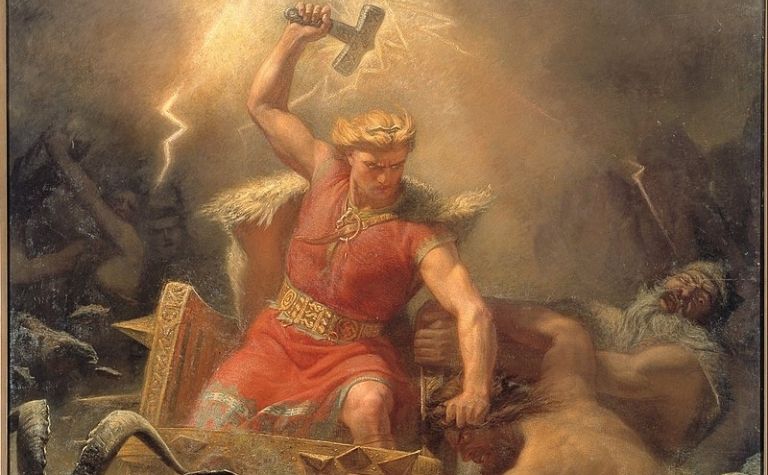
Who can lift Mjolnir in Marvel comics?
- Roger “Red” Norvell (Thor #276, Oct. 1978)
- Beta Ray Bill (Thor #337, Nov. 1983)
- Captain America (Thor #390, April 1988)
- Eric Masterson (Thor #433, June 1991)
- Bor, Thor’s grandfather (Thor #600, April 2009)
- Buri, Thor’s great-grandfather (Thor #355 (May 1985)
- Loki (Loki: Agent of Asgard #9, Dec. 2014, and Avengers & X-Men: AXIS #9, December 2014)
- Jane Foster (Thor vol. 4 #8, May 2015)
- The Destroyer (Thor vol. 4 #7, May 2015)
- Black Panther (Avengers vol. 8 #36, September 2020)
- Eddie Brock (King in Black #5, April. 2021)
- Wonder Woman (DC versus Marvel July 1996)
- Superman (Avengers/JLA #4, Dec. 2003
Who can lift Mjolnir in Marvel movies?
- Captain America moves Mjolnir, though he doesn’t “lift” it, in Avengers: Age of Ultron
- Hela, Thor’s sister, catches Thor’s hammer in Thor: Ragnarok and then destroys it
- Captain America wiels Mjolnir in battle in Avengers: End Game
Can Anyone Lift Mjolnir in Norse Mythology?
Known primarily as the god of thunder, Thor, in Norse mythology, was the defender-in-chief of both Asgard (the realm of the gods) and Midgard (the human realm), and Mjolnir is typically in his grasp.
According to Viking lore, Thor was looked to for protection from disaster and harm, to sanctify marriages and formalize agreements, and for general problem-solving.
Although capable of leveling mountains with a single blow, Thor’s hammer was more than a weapon of incredible destruction.
In Thor’s righteous hands, Mjolnir was also an instrument of justice and peace.
Throughout Viking lore and Norse mythology, instances of Mjolnir being possessed by any being, god, giant, or otherwise – aside from the mighty Thor – are few and far between.
From this, it can be gathered that Thor is the rightful owner and bearer of Mjolnir and that since its creation, only a select few have ever lifted Thor’s hammer.
By simple virtue that Thor and his hammer are virtually inseparable, the opportunities to lift Mjolnir are slim to none.
The awesome destructive power of Thor’s hammer is its best-known attribute.
As the stories go, the sound of thunder rumbling in the sky meant that, somewhere, Thor and Mjolnir were laying waste to giants or other forms of evil.
And no matter the distance, Mjolnir always found its way back to Thor’s awaiting hand like a boomerang flying back to an aboriginal hunter in the outback. [1]
Lifting and handling Mjolnir is one thing; wielding it and unleashing its powerful attributes is quite another, and in this regard, Thor is in exclusive company.
In fact, Thor is the only being in all of Norse mythology who has actually brought Mjolnir’s full powers to bear (his sons will presumably carry on the hammer’s great legacy after the passing of Ragnarok).
Interested in Norse Mythology? See 14 Great Books on Norse Mythology that explain the gods, heroes, and villains of these ancient stories of Scandinavia.
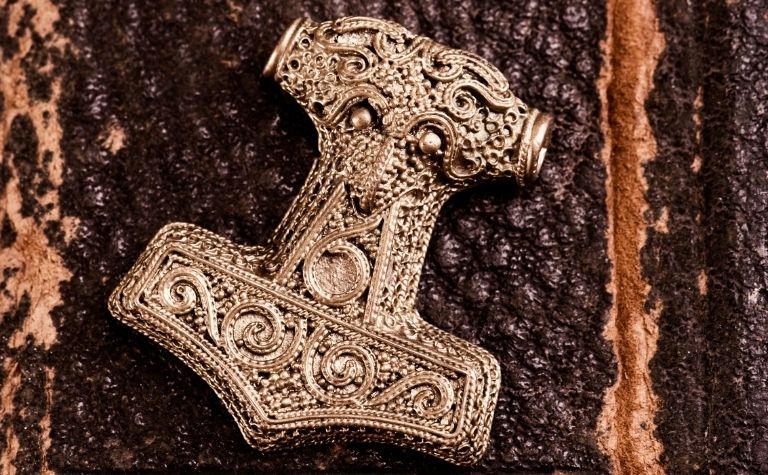
Who Can Lift Mjolnir Other Than Thor?
Contrary to popular belief and the modern interpretation of Old Norse myths, Thor’s hammer does not have the same mass as a small planet, nor does it weigh millions of pounds.
Additionally, Mjolnir does not have a magical ability to detect the righteousness or worthiness of those who seek to lift it, allowing some to wield it while denying others.
However, this is not to say that anyone encountering Thor’s hammer can lift it and harness its awesome abilities in the same manner as its true master.
According to Norse mythology, Thor had three possessions upon which he relied heavily to protect Asgard and Midgard from those that sought to do its inhabitants harm:
- His hammer Mjolnir, which aside from its capacity to destroy, also had the magical abilities to strike its intended target without fail and to return to the hand of its wielder (Thor) when summoned
- His belt Megingjord, which when worn, doubled his already superhuman strength
- His iron gloves (Jarngreipr) needed to wield Mjolnir and unleash its incredible powers (the exact reason is not clear; there is speculation it is because Mjolnir was red hot or because the handle was so short). [2]
Despite the seemingly supernatural bond between Thor and Mjolnir, Norse mythology mentions a handful of instances when others lifted this magical Viking hammer.
One relates to its creation, another to an act of treachery, and the last relates to a somber Norse prophecy.
Here then, is the shortlist of those who can lift Mjolnir, aside from Thor.
One of the most important religious beliefs the Vikings had concerned Valhalla. See Is Valhalla Heaven or Hell? Facts That Might Surprise You to learn more.
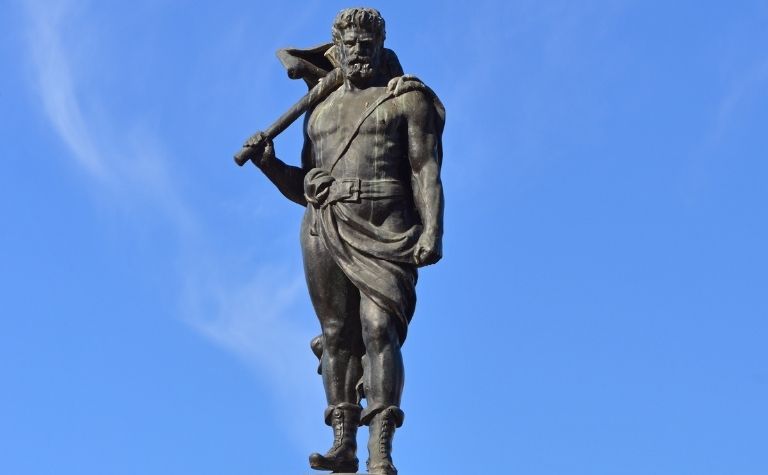
The Dwarf Brothers Brokkr and Sindri
In Norse mythology, dwarves were a race of intelligent and highly skilled underground dwellers known far and wide for their remarkable craftsmanship, particularly when it came to metalworking and forging.
It was for this reason that Norse gods sought out dwarf artisans to fabricate high-end weapons, jewelry, and other specialized items.
Mjolnir was the creation of dwarf brothers Brokkr and Sindri, who were approached by Loki and tasked with the project under the guise of a wager.
Loki had commissioned several pieces by a different set of dwarf brothers and had challenged Brokkr and Sindri to come up with even finer objects, with his head as the payout.
Despite his attempts to interfere with their work as it became evident that they would succeed, the brothers still turned out three masterpieces, including Mjolnir (albeit with a shorter handle than originally designed due to Loki’s attempt to sabotage the piece).
As the fabricators of Thor’s hammer, it is presumed that Brokkr and Sindri lifted and worked Mjolnir through its various forms until it was completed.
Mjolnir is not the only well-known object created by dwarf artisans.
So admired and respected were dwarves for their work that many famous objects associated with various Norse gods and goddesses resulted from their gifted hands, including:
- Gungnir, the spear used by the Norse all-father god, Odin
- Skidbladnir, a self-propelling ship that filled its sails with its own perfect wind and neatly folded into the size of a handkerchief when not in use that was gifted to the goddess Freyja
- Locks of golden hair that were created to replace those of Thor’s wife, Sif
- Draupnir, a magical ring worn by Odin from which eight new rings sprung every ninth night
- Gullinbursti, a boar with golden fur that was gifted to Freyja [3] [4]
The Norse dwarves are fascinating figures. See Meet the Dwarves of Norse Mythology: Who are they? to learn more.
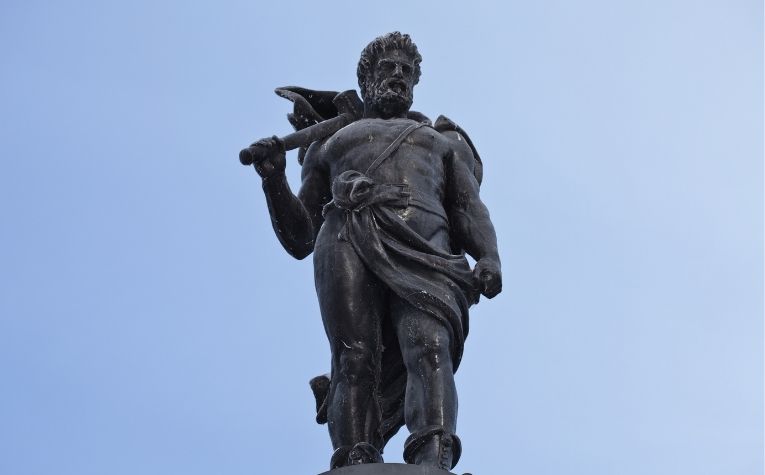
The Trickster Loki
Interestingly, the idea behind Mjolnir’s creation came not from Thor or even the all-father Odin, but rather, the least likely of Norse gods, Loki.
The infamous Norse trickster god is credited with setting in motion the series of events that led to the fabrication of Thor’s hammer and handing the all-powerful weapon to Thor as a gift.
Loki was up to his mischievous ways when he cut off all the locks of hair from Sif’s head, who happened to be Thor’s wife.
The enraged Thor was about to throttle the life out of the rascal when Loki proposed going to the dwarves to have replacement hair made, finer than those he had cut off.
Thor agreed and Loki, true to his word, had dwarves spin new blond locks for Sif and craft Skidbladnir and Gungnir.
As he was prone to do, Loki saw an opportunity to create a little mischief during his time in the dwarf realm.
He brought these newly crafted items to the dwarf brothers Brokkr and Sindri and mockingly challenged them to create even higher quality objects, with Odin to serve as a judge.
Despite its short handle (thanks to Loki’s shenanigans), Odin declared Mjolnir to be a perfect piece of craftsmanship, and the dwarves won the wager.
Brokkr and Sindri traveled to Asgard to collect their payment (Loki’s head), but the trickster traveled hastily with all the dwarves’ creations in tow (including Thor’s soon-to-be signature accessory).
Loki arrived ahead of them and bestowed all the dwarves’ wares upon Odin and Freyja and gifted the almighty Mjolnir to Thor.
Thus, it came to pass that the most feared weapon in all of the Norse universe came into Thor’s possession through the guile, deceit, and trickery of Loki, who transported Mjolnir from Brokkr and Sindri’s underground workshop to Asgard. [5]
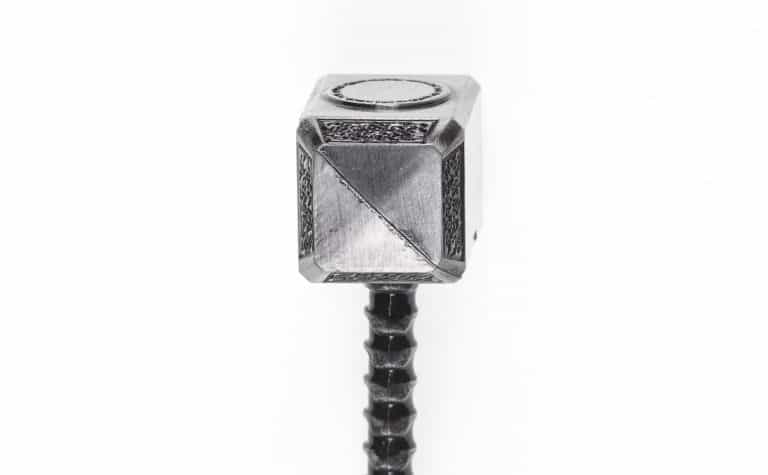
The Giant Thrym
Although it contains many accounts of Thor’s heroism, the Poetic Edda also recalls when Mjolnir was stolen from Thor by the Norse giant Thrym, who took it to Jotunheimr (the realm of the giants) and hid it deep underground.
The theft of the most powerful weapon known to Vikings was part of Thrym’s ploy to marry the goddess Freyja; only if she agreed to become his wife would Mjolnir be returned.
When Freyja vehemently opposed the idea of marrying Thrym, a select group of Norse gods brainstormed on how best to retrieve Thor’s hammer from Thrym.
Loki hatched a plan by which the love-struck giant would be deceived into believing that Freyja had conceded to his wishes and would soon arrive in Jotunheimr along with her bridesmaid to take his hand in marriage.
Unbeknownst to Thrym, the bride-to-be was none other than Thor dressed as Freyja, and her bridesmaid was Loki, who artfully allayed any initial suspicions on the part of the giants.
When the moment came to bestow gifts upon the bride, Mjolnir was brought out from its hiding place and placed on its rightful owner Thor’s lap, and within moments, the entire entourage of giants was massacred.
As it turns out, Thrym managed to “lift” Mjolnir in more ways than one.
Although he successfully absconded with Thor’s hammer (and presumably lifted it during the theft and transport back to Jotunheim), Thrym paid the ultimate price for his malfeasance while falling victim to a masterful deception that is one of the most popular tales in Norse mythology. [6]
Interested in the Norse giants? See The Giants of Norse Mythology to learn more.
Thor’s Sons: Magni and Modi
One of the central themes of Norse mythology is the cycle of life and death.
The Vikings believed that the entire universe would one day be destroyed during a cataclysmic battle in which virtually all beings – gods, humans, and otherwise – would perish.
This apocalyptic event, known as Ragnarok, would even see great Norse gods’ demise, including Thor and the all-father Odin.
From the ashes of this cosmic destruction would rise a new world, led by a few gods who survived Ragnarok.
Among these would be Magni and Modi, the sons of Thor, who would be tasked with carrying on their father’s legacy and rebuilding the realms of the gods and humankind to their previous glory.
Magni is considered the strongest of all Norse gods, even surpassing the superhuman strength of his father.
As foretold by Viking prophecies, Magni and Modi would inherit the mighty Mjolnir and its incredible powers to aid them with their monumental duties.
Thus, not only would the bloodline of Odin and Thor continue in the rebirth of the Norse universe, but Thor’s hammer would be a vital instrument of the rebuilding process. [7]
Norse mythology and Greek mythology have interesting similarities and differences. See Would Odin Beat Zeus in a Fight? to learn more.
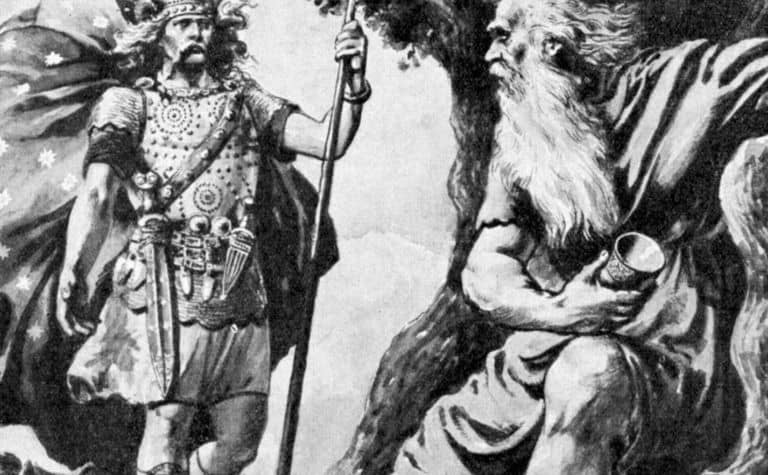
What Is So Special About Thor’s Hammer?
Mjolnir was deemed perfect by the father of all gods, Odin.
Anything struck by Thor and his hammer would be decimated beyond recognition, and it was imbued with magical attributes such as never missing its intended mark and always returning to the hand of its master.
According to Norse myths, there are even more incredible stories about the powers of Mjolnir.
Mjolnir Could Revive the Dead
Not surprisingly, a god of Thor’s physical stature, coupled with being tasked with defending both the realms of gods and humankind, could require great amounts of sustenance.
To illustrate his voracious appetite, during the deceit of the giant Thrym to retrieve his stolen hammer Thor (disguised as Freyja) devoured an entire ox along with eight salmon and quaffed three barrels of mead.
Thor’s trusted hammer not only has the power to destroy, but also to heal, restore, and revive.
According to Norse myth, Thor’s preferred mode of transportation was a chariot pulled by his two beloved goats, Tanngrisnir and Tanngnjostr.
At the end of a day’s ride, completely famished, Thor slaughtered his goats and ate their meat to his heart’s content.
Fortunately for the god of thunder, Mjolnir had the power to revive the goats and bring them back to life, not only to resume pulling Thor’s chariot but also so that they could be slaughtered yet again to provide another meal.
Mjolnir Was a Long-Range Weapon
In the hands of Thor, his hammer could be deployed as a deadly, high-precision, long-range weapon that never failed to find its mark.
One instance of this ability was when the giant Hrungnir, in a drunken state, boasted that he could destroy Valhalla, slaughter all the Norse gods, and seduce Freyja take her away as his wife.
This infuriated the hot-tempered Thor, who raised Mjolnir to slay the giant.
In a moment of rare decency and sportsmanship, Thor allowed Hrungnir to leave and retrieve his weapon to engage in a fair fight.
However, as Thor followed the giant to Jotunheimr and the moment that Hrungnir armed himself with his whetstone, Thor launched Mjolnir from a great distance toward the giant.
Seeing this, Hrungnir hurled his massive whetstone at the incoming hammer, but to no avail.
The whetstone was completely obliterated upon impact, and Mjolnir continued its course unaffected and struck the giant square in the head, and his skull was “smashed… into small crumbs”. [8]
The Popularity of Thor and Mjolnir Among the Vikings
While Thor is arguably the most popular and widely worshipped of the Norse gods, his hammer Mjolnir may very well be the most commonly used symbol of the Viking era as well.
To appreciate its broad appeal, it is important to understand that Thor’s hammer was not merely a weapon or instrument of destruction.
It was as meaningful to a Viking farmer, housewife, or craftsman as a battle-tested warrior.
Thor’s Hammer Meant More to Vikings Than War
To the Viking people, Thor’s hammer was far more than an implement of war.
It came to represent the sanctity of formal unions and agreements, such as marriages and contracts through the years.
Mjolnir was associated with the blessing of unions between husband and wife and births and deaths.
It also hallowed the rendering of judgments on disputes and rectified transgressions, much like a judge’s gavel finalizes entry of a legal decision.
Mjolnir also represented protection in various forms, such as calm waters for ocean voyages and cooperative weather conditions for bountiful crops and harvests.
Thor’s hammer became a catch-all religious device to provide for the bare essentials for the Viking people during the Middle Ages when life expectancy was quite short by modern standards and protected against evil and bad fortune.
Therefore, it comes as no surprise that hammer-shaped amulets and trinkets are among the most common Viking era artifacts found throughout Scandinavia.
In comparison, the occurrences of Thor hammer artifacts far outpace the number of recovered Odin spears, Freyja ships, or Heimdall horns, which goes to show the immense popularity of Thor and Mjolnir among the common Viking citizen. [9]
Even in Iceland, roughly a thousand miles away from Scandinavia, more than one-quarter of the founding population had some form of Thor (either as a prefix or a suffix) in their name.
And even as Christianity spread and the cross became a highly visible symbol of the growing Christian faith among the Norse people, Thor’s hammer remained on prominent display in jewelry and adornments. [10]
Final Thoughts
Although it is most commonly associated with slaying giants, leveling mountains, and destroying that which threatens the livelihood of gods and humankind, Mjolnir is perhaps better described as an instrument of honor, fairness, and justice.
And in so doing, it becomes abundantly clear that its righteous purposes were best served in the hands of the god of thunder himself, Thor.
References:
[1] Source
[2] Source
[3] Source
[4] Source
[5] Source
